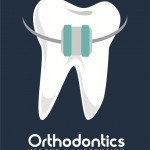
Patients and orthodontists have an interest in reducing the duration of orthodontic treatment. Long treatment times may impact on patient compliance and increase the risk of adverse effects such as white spot lesions, and root resorption. A range of methods have been used to accelerate tooth movement including low-energy lasers, magnetic fields, pharmacological interventions and vibrational devices.
The aim of this review was to investigate the ability of vibrational devices to increase the rate of orthodontic tooth movement or reduce pain associated with orthodontic treatment.
Methods
Searches were conducted in the PubMed/Medline, Embase and Cochrane Central Register of controlled trials databases and the journals; American Journal of Orthodontics & Dentofacial Orthopedics, Angle Orthodontist, European Journal of Orthodontics, and Journal of Orthodontics.
Randomised controlled trials (RCTs) comparing vibrational devices to accelerate orthodontic treatment in patients age 11 years and above were considered. The primary outcome was the rate of tooth movement, pain during tooth movement was a secondary outcome.
Two reviewers independently screened studies and extracted data with risk of bias being assessed using the Cochrane tool. Owing to the heterogeneity of the included studies a narrative summary was presented.
Results
- 5 RCTs reported in 6 papers were included
- 2 were considered to be at high risk of bias and 3 at unclear risk of bias.
- 1 RCT reported increased tooth movement, 4 reported no difference.
- 3 studies reported on pain reduction reporting no difference with vibrational devices.
Conclusions
The authors concluded: –
The ability of vibrational forces to increase the rate of tooth movement and reduce pain in orthodontic patients has been studied in several RCTs. The results from all but 1 of the included studies indicate no advantage from the use of vibrational devices during orthodontic treatment. Future studies should focus on total treatment duration, the mechanism by which vibration may speed up tooth movement, and the use of vibration with aligners.
Comments
This review addresses the same question as a review we considered a year ago (Dental Elf – 8th Dec) 2017). With the exception of one trial published since that review all the included studies were considered in the previous review. This new trial was small involving only 26 patients in total so adds little new information to the current limited number of RCTs available on this topic. The currently available evidence to demonstrate any advantage from the use of vibrational devices during orthodontic treatment is limited and of low quality. As this and the previous review highlighted well designed and conducted RCTs with good sample sizes that are clearly reported are required.
Links
Primary Paper
Aljabaa A, Almoammar K, Aldrees A, Huang G. Effects of vibrational devices on orthodontic tooth movement: A systematic review. Am J Orthod Dentofacial Orthop. 2018 Dec;154(6):768-779. doi: 10.1016/j.ajodo.2018.07.012. PubMed PMID: 30477774.
Other references
Dental Elf – 8th Dec 2017
Orthodontic treatment- can a vibrational stimulus shorten treatment times?

[…] Vibrational devices: Do they accelerate orthodontic tooth movement? […]